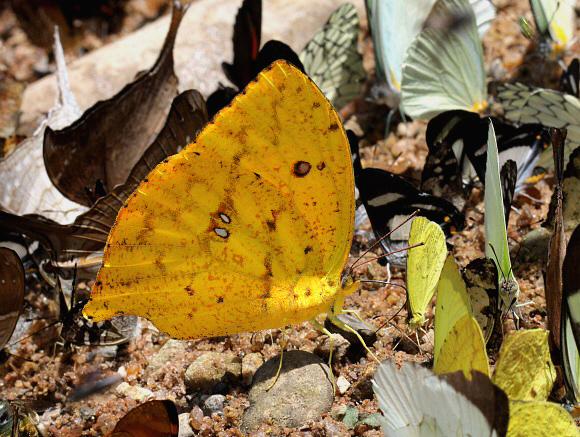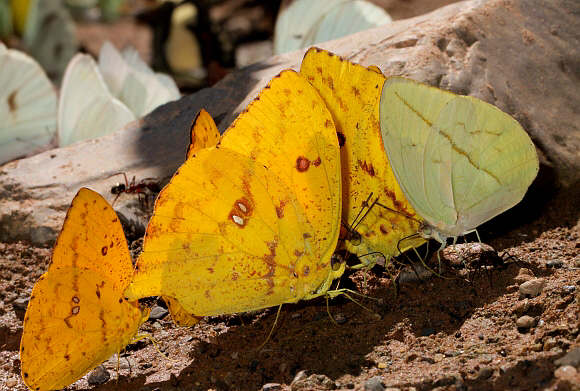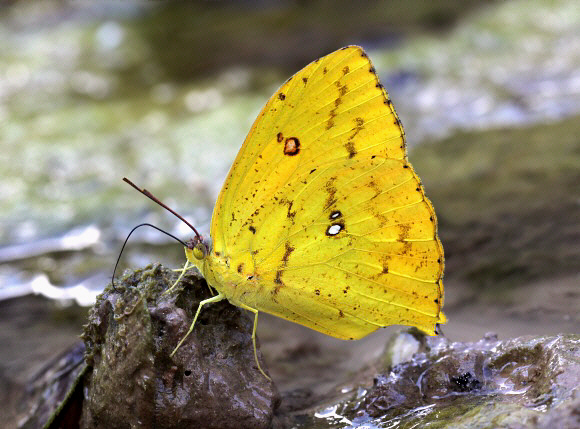
Introduction
The subfamily Coliadinae includes the Sulphurs, Grass Yellows, Clouded Yellows and Brimstones. In the neotropical region there are about 70 species.
The genus Phoebis comprises 8 species. Most are migratory, and widely distributed throughout the neotropical region. There are however a few non-migratory and very localised species – avellaneda which is found only in Cuba, editha which is endemic to Haiti, and bourkei – found only in Ecuador. All Phoebis species are sexually dimorphic. Males are bright yellow above, with a thick patch of matt androconial scales around the forewing cell. Females are paler on both wing surfaces.
Phoebis neocypris is found from Mexico to Brazil and Peru. The illustrated subspecies rurina occurs in Peru, Ecuador, Venezuela and Colombia.
Habitats
As with other migratory Phoebis species, neocypris can be found in a wide range of habitats among which are primary and secondary rainforest, deciduous woodland, scrubby grassland and farmland. It is a lowland species, rarely found above 1000m elevation.

Lifecycle
The egg is yellow and is laid singly beneath young leaves of Zygia and Cassia (Caesalpinaceae). The larva is brownish, suffused with green along the back and sides, and with a pale yellow lateral stripe. The chrysalis is pale green and hangs upside down from a leaf or stem, attached by the cremaster and secured with a silken girdle.
Adult behaviour
Males are usually seen in lower numbers than sennae or argante, but can often be found amongst mud-puddling aggregations of other Phoebis species. These insects often form very tightly packed groups of dozens of individuals. If alarmed the entire group erupts spontaneously into the air and swirls about for several minutes afterwards in a seething mass of fluttering yellow wings.
The paler females are seen less often, and are usually observed in flight, or when nectaring at red flowers such as Lantana and Impatiens. There is no courtship ritual – the females are intercepted in mid-flight and forced to the ground where copulation takes place immediately.

